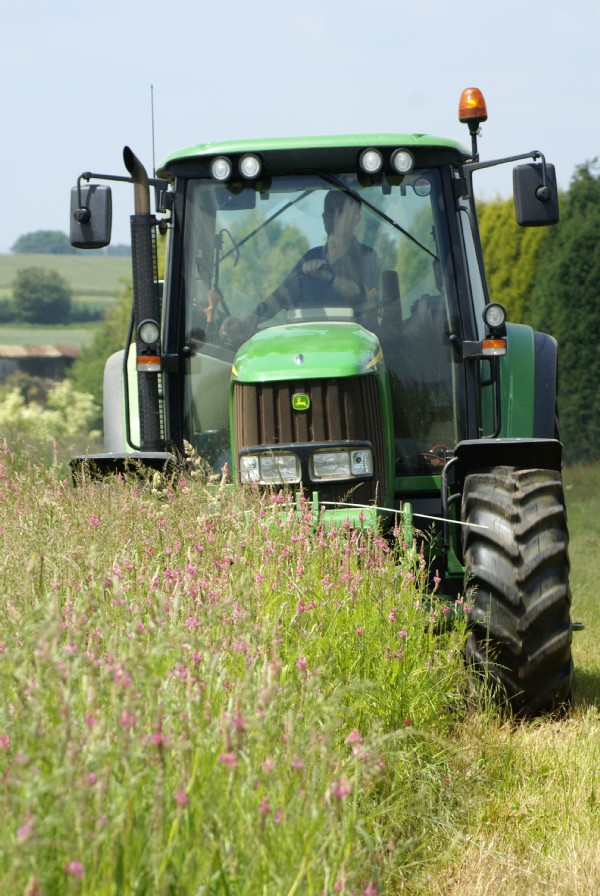

Sainfoin leys should be considered to last four years or more. In this they are similar to Lucerne. However a proportion of the sainfoin will last considerably longer (up to 20 years). The potential longevity is confirmed by its presence in self-sown patches which recur annually e.g at side of roads etc. As a crop it will become diluted by grass after about four years.
What type of Soil is best?
It is essential that sainfoin is grown on those soils most suited to it. These have traditionally been the chalk, limestone and sandy soils liable to drought. The main criterion is that the land must be free draining and have a pH of around 6. This does not rule out better medium loam soils which will give higher yields. It will thrive also on very stony soils such as are found in the Cotswolds.
Establishment
The seed of sainfoin is quite large (5 – 7 mm) being contained in a husk. Formerly milled seed was also used but not in recent years. In the UK, sowing is usually done in spring (April-May) after the soil has had time to warm up or it can be sown later (up to August). A high seed rate is required on account of the large seeds in the husk. The recommended rate is 65–100 kg unmilled seed per hectare (25 – 40 kg per acre). The seed rate will depend on germination level of seed, size of seed and soil conditions.
Sainfoin must be allowed to grow unchecked during the summer of establishment and grazing, if any in the autumn, should be light depending on the the crop or it should not be grazed at all (ref. Dai Barling).
Should it be grown with a Companion Grass?
For grazing it is an advantage to have some grass present as this will enhance the yield. We suggest some meadow fescue, timothy or cocksfoot; the seed rate is kept low to avoid competing too much with the sainfoin. This means using from 2-4 kg per acre of the combined grasses. A small amount of white clover can be added.
Depth of Sowing: The sainfoin is contained in a husk and therefore bulky. It should be drilled at 1-2 cm deep, the grass seeds being broadcast over the drills. An ordinary corn drill is satisfactory.
Plant Density Required: 70-150 plants per sq metre at establishment, 50-60 plants per sq metre at the end of the first season
Undersowing in Spring
This is a good way to establish sainfoin. It can be sown into a cover of spring barley, the latter being sown at about 50% of the normal rate. This can be taken off as silage, and will contribute towards the first year which is otherwise unproductive. You will also get some light grazing in the first autumn provided that the sianfoin is well established. Otherwise it is better to leave it ungrazed through the winter. After this the crop will come into production and last for 4 years, some times longer.
Sainfoin can be sown into a spring barley cover crop. This provides a return in the first season. The barley seed rate is reduced and the seed bed should be very firm and fine. The sainfoin is cross drilled into the barley.
Weed control
It is an advantage to use a selective weed killer such as ‘Belmac +’ ( No longer recommended as an on label approval *2016) at the seedling stage to control annual weeds. This may not always be necessary, but it will often make the difference between a good crop and a poor one. After this it is possible to control weeds in the dormant winter period using recommended sprays.
Fertiliser
In the first spring a small dressing of N can be advantageous, but after this the rhizobia will start working and fix enough N for the crop and also the grasses. Potash @ 50-60 kg per hectare is recommended each year in order to get good production.
by Robin Hill of Cotswold Seeds
Date Posted: 30th March 2017



